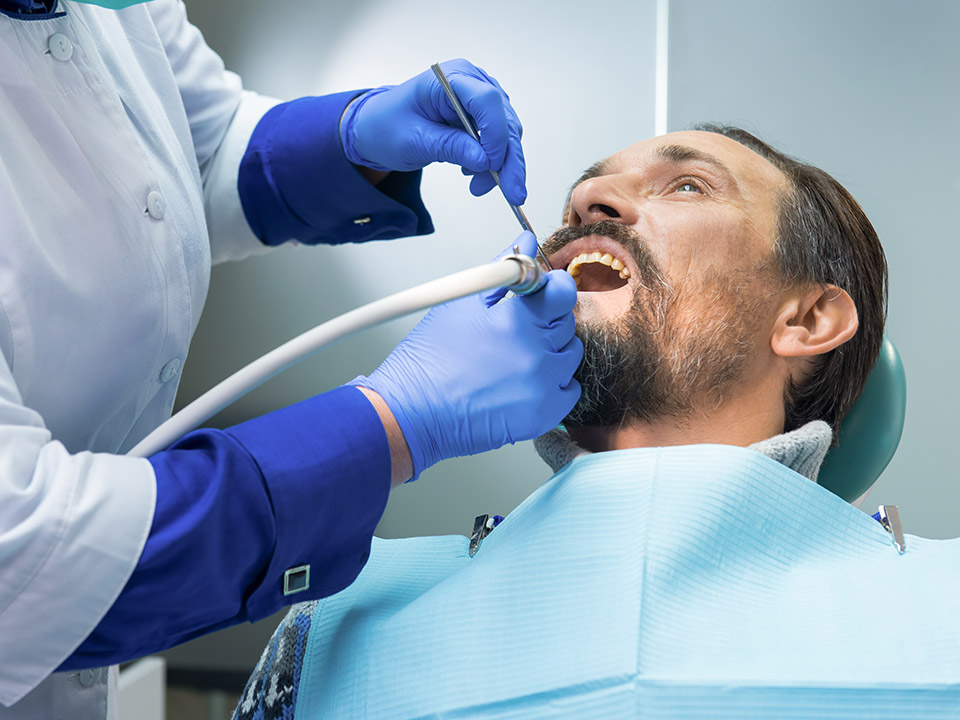Heavy drinking and tobacco use has a lot of effects on health. One lesser-talked-about condition caused by substance abuse is Leukoplakia. This is a condition where the patient develops white patches or spots on the inside of the mouth. And sadly, you cannot scrape off these patches.
Unfortunately, doctors do not know what causes leukoplakia but suspect it is chronic irritation from prolonged tobacco use and alcohol abuse. So if you notice patches on your tongue, insides of your cheeks, and even gums, do not rule out this disorder.
The information below will shed a little more light on this condition, including the primary causes, significant symptoms, available treatments, and how to prevent it.
Causes of Leukoplakia
While doctors are not sure what causes this condition, it is often associated with:
- Heavy smoking
- Injury to the side of the cheek
- Consistent use of tobacco products–chewing and sniffing
- Improperly fitting dentures
- Heavy alcohol use
- Inflammatory conditions
- Chewing the betel nut, native to the tropics of Asia, the Pacific, and parts of east Africa.
- Excessive sun exposure to the lips
- HIV/AIDS
Additionally, this condition is prevalent in men between 50 and 70. Very few cases occur among people under the age of 30.
Symptoms of Leukoplakia
The primary symptoms of leukoplakia often occur on the inside of your cheeks, the bottom of the mouth, under the tongue, and sometimes on the tongue. These patches are not painful, and you may not even notice them until other symptoms follow. You may experience:
- Thickening of the tissues in the patchy areas.
- Raised red lesions
- Irregular texturing on the affected places
- Grayish or white patches
- Hairy texture– but only in hairy leukoplakia
The patches develop slowly over a few weeks or months. They can be sensitive to touch and react to heat, spicy food, and cold. The location or size of the patch often does not matter, and they do not determine if the patch turns cancerous. Only a doctor can determine this.
Hairy leukoplakia is a variation of the condition that causes white patches on the sides of the tongue. They look like folds and ridges with a layer of fuzz which is why people often mistake them for oral thrush.
Treatment options for Leukoplakia
It is important to note that the patches do not cause any pain or discomfort in most cases. However, this is not enough reason to ignore your symptoms, as the underlying condition could be much worse. So if you have any of the following, ensure that you go to the doctor for a diagnosis.
- Lumps in red or white in the mouth
- White plaques or sores that do not heal independently in two weeks
- Ear pain when swallowing
- Irregular texture on mouth tissues
- Challenges opening your jaw
Before the diagnosis, the doctor will investigate and rule out all possible causes of the white patches. These patches rarely cause any symptoms and could therefore be anything from side effects to dental disease.
Often, your doctor will take a tissue sample for laboratory examination after leaving the patches for a few weeks and ruling out all other possible causes. If the biopsy does not show a precise diagnosis, then the patches are confirmed as leukoplakia if they are not established as cancerous. Unfortunately, these patches have the potential to become cancerous, so treatment is necessary.
The main goal of leukoplakia is to prevent the patches from becoming cancerous. Note that treatment is a challenge as results are not always consistent. Furthermore, some of the patches may disappear but will often return. When your doctor diagnoses you with this condition, they will recommend medical management, including:
Vitamin A and Beta-carotene supplements
These supplements will help clear the white patches in the mouth and may even soften the tissues. However, it is a temporary solution because the patches should appear again once you stop taking them. And you cannot take them all the time since your body could react to the influx of these nutrients.
Oral Retinoids
Another recommendation is that a doctor will use this vitamin A-based treatment to reduce the lesions. It is commonly used to treat acne and psoriasis, so it will help the condition. However, side effects are common, and you could relapse.
Isotretinoin supplements
These supplements are good because they are more effective in preventing cancerous changes. The doctor will prescribe these supplements to prevent cancerous changes in the patches. Therefore, keep up with your prescription if the doctor recommends these supplements.
Surgery
Doctors may also recommend removing the lesions with surgery. However, there is a 10% to 20% chance that the patches will return after surgical removal in this case. Similarly, there is a 3% to 15% chance of developing cancer even in the treated areas. Doctors often recommend this is a severe case.
Laser Removal
This is similar to surgical removal. The doctor will use a laser to remove the patches and lesions. It can prevent the patches from turning cancerous.
Cryotherapy
This is another removal procedure that involves freezing to remove the lesions.
Electrocauterization
And lastly, the doctor can use an electrically heated needle or sharp instrument to remove the lesions.
It is important to note that surgical removal is often recommended for people with severe symptoms and at risk of developing cancer.
How to prevent Leukoplakia
If you are worried about developing leukoplakia, here are a few tips to keep you on the right side of health:
- Keep up with oral hygiene routines. Ensure that you brush at least twice a day and floss at least once. Keeping up with oral hygiene routines helps wash away acidity and toxins from tobacco and alcohol.
- Eat a balanced diet. Ensure that you get sufficient nutrients to keep your mouth and body healthy. It will be better equipped to fight off infections and lesions.
- Quit smoking. Quitting smoking and tobacco use at any age will significantly reduce the risk. The earlier, the better.
- Limit alcohol use. Ensure that you drink responsibly and limit your drinks to prevent excessive irritation.
- Get dental checkups. And lastly, do not skip your dental checkups. They help with early detection, thus improving treatment and recovery.







